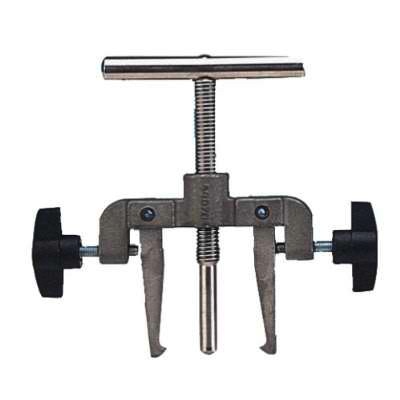It’s obvious that we still have a problem with our refrigerator. Ever since we added the spillover fan – and redid all the insulation – we’ve had a problem with the freezer frosting up exponentially faster than it EVER has before.

We’ve been gone for 10 days, so the fridge/freezer has not been opened or exposed to outside moist air. Regardless, we had to literally take an ice pick to get a pork tenderloin out of the block of frost stuck to our Super ColdPlate for dinner last night.
We just redid all the insulation and the door/lid seals, but obviously we still have moist air getting in. 🙁
Today, we went to Home Depot to try something different. We went back to the original window seal type of seals for the lids instead of the fancier refrigerator seals that we bought online.
In the meantime, we had to defrost the freezer so we could get to the meat frozen into the block. Different boats have different methods for this project, but here’s ours…

1. Turn off the refrigerator both at the refrigerator and also at the electrical panel. I’m not sure why we do this, but we do.
2. Take everything out of the freezer/refrigerator and put it in the Igloo cooler. The ice cubes and frozen water bottles we use as spacers will keep everything cool for a few hours.
3. Get out the trusty blow dryer — this hair dryer has literally never been used for hair, but does a pretty good job hurrying up the defrosting procedure.
4. We also put the little fan that normally lives above the stove as a stove exhaust fan in the box to help circulate the air and speed the process.
5. Usually less than an hour later, we have a completely defrosted and dry freezer and refrigerator and can turn it back on to begin cooling.
6. We let it cool for a bit before putting all the food and frozen items from the Igloo cooler back in the refrigerator. Then it’s time to make a run to the market for new stuff so if we get a chance we could go anchor out for a few days.
Then either head to the pool for a victory plunge or pop a cold victory beer in celebration … choice depends on the time of day. Of course, we could have just untied the dock lines and gone sailing, but David wanted to replace those seals, so instead we headed to Home Depot.
Anyone have additional ideas for our overworking freezer? We cannot imagine how air could be getting in except through the seals that we recently replaced and obviously the new stuff does a worse job that the old. Please leave a comment and let us know! THANKS! Jan













Have you tried putting in a few bags of dehumidifying silca crystals in the freezer, and periodically dry them out in the sun before replacing in the freezer Say once a week or so.
Some people also use open bags of rice to do the same job.
We also dry the food bags before placing in the home freezer to remove condensation gained on the trip back from the store.
The other way is to get a frost free freezer, but these do use a bit more power, but are hassle free. 🙂
Hi Michael! I think the first step is to get the lid seals replaced so they pass the dollar bill test. I’ve never heard of trying reusable silica gel/crystals in the freezer, but if replacing the seals (again) doesn’t help, we may try it. There are a variety of products on Amazon that don’t contain cobalt chloride (carcinogen?). A frost free freezer is a wonderful idea, but I’m not aware that’s an option for a traditional boat freezer. 🙂 THX! Jan
Whenever we defrost we spray Pam on the coldplate and evaporator. Next time we defrost the frost/ice comes off with a spray of warm water and a plastic scraper. Much easier with this trick!